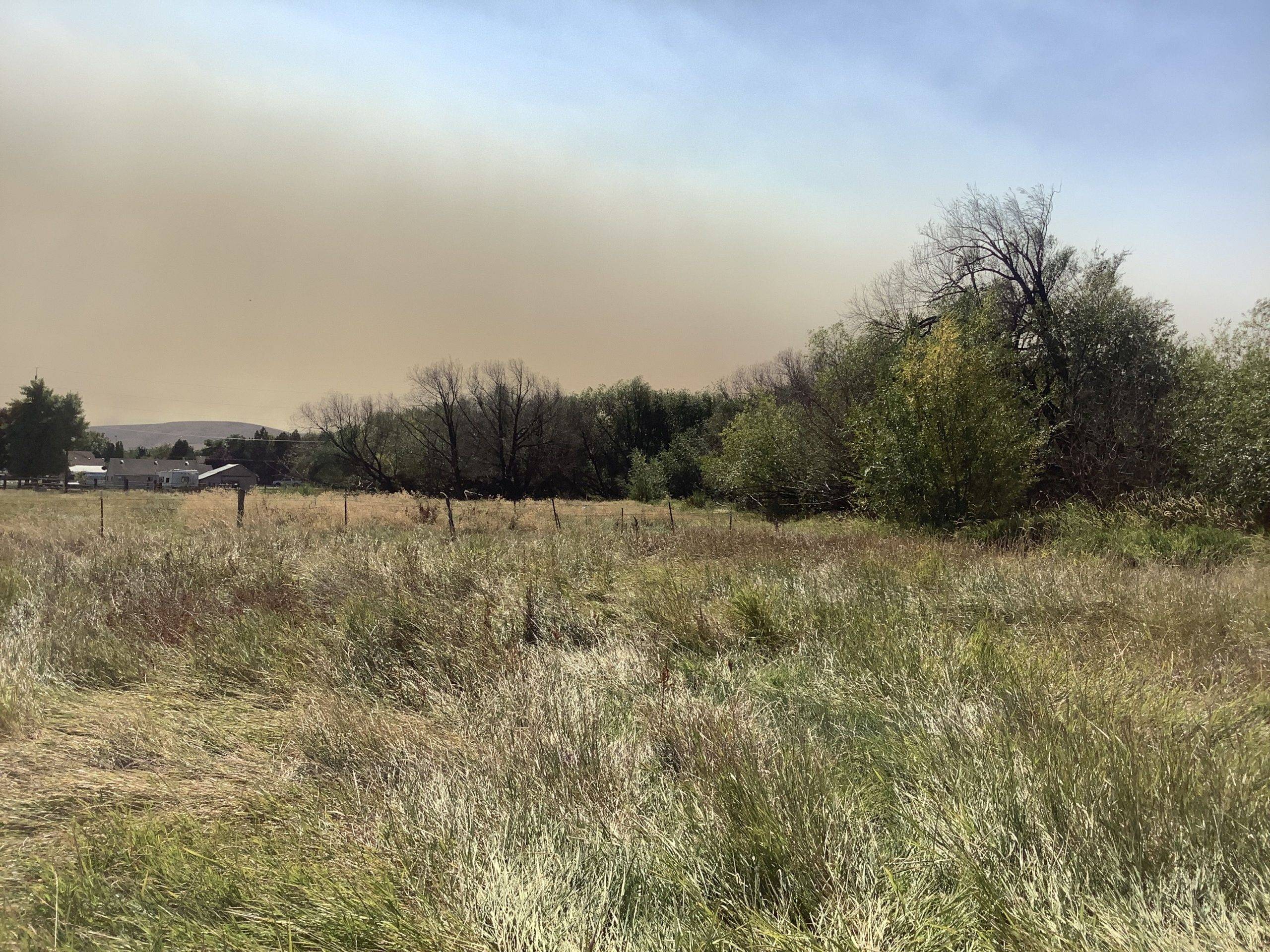
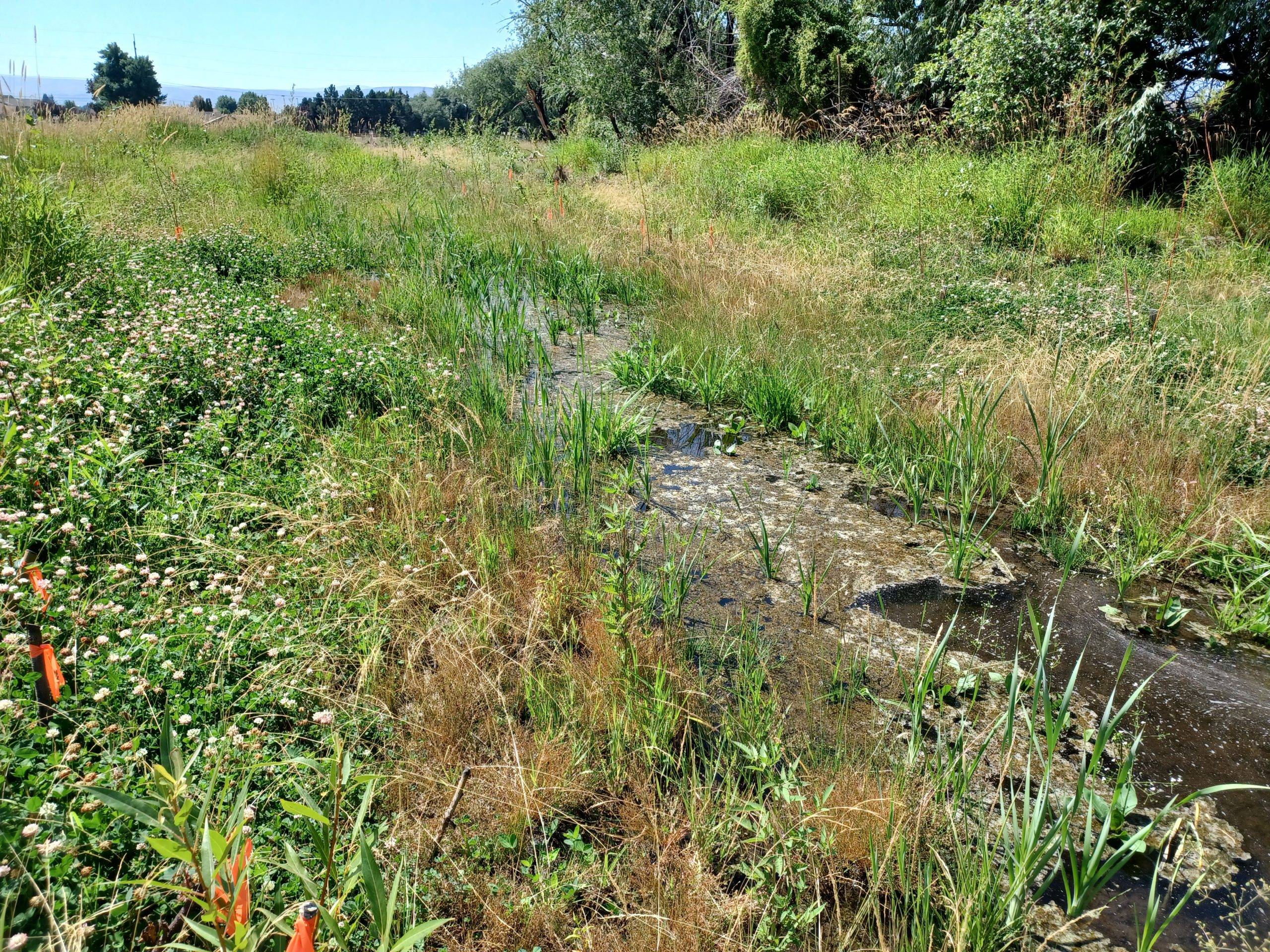
About the Project
The Mercer Creek Riparian Restoration project, located along 1,200 ft of Mercer Creek between Airport Road and East Helena Avenue in Ellensburg, aims to enhance floodplain and riparian habitat. Streamside (riparian) areas perform key functions for society and for the environment: stabilizing sediments and filtering water, providing temperature-moderating shade, creating a base in the food-web for insects eaten by fish and wildlife, and slowing and spreading water during flooding to reduce erosion and flooding downstream. This project builds on previous efforts elsewhere on Mercer Creek to improve water quality, increase riparian habitat, and reduce flooding. The project includes four private landowners and a parcel owned by Kittitas County.
Background
Mercer Creek is part of the Wilson Creek system, carrying both natural water flow and irrigation returns. Mercer Creek separates from Wilson Creek approximately 11 miles northeast of Ellensburg. It travels through agricultural areas, through the urban fringe area of northern Ellensburg, and then through the City of Ellensburg proper before rejoining Wilson Creek at the City’s southwest edge, 2 miles downstream of the project area.

Construction
Mid-Columbia Fisheries Enhancement Group (MCF), Kittitas County Flood Zone Control District, the City of Ellensburg, and the Washington Department of Fish and Wildlife are collaborating to improve water quality and fish habitat on Mercer Creek by controlling invasive crack willow, recontouring a 1.5-acre floodplain, planting native riparian vegetation, and excluding grazing from the creek and shoreline. Crack willow is non-native. It is an aggressive willow hybrid that out-competes native trees and harms water quality and habitat.
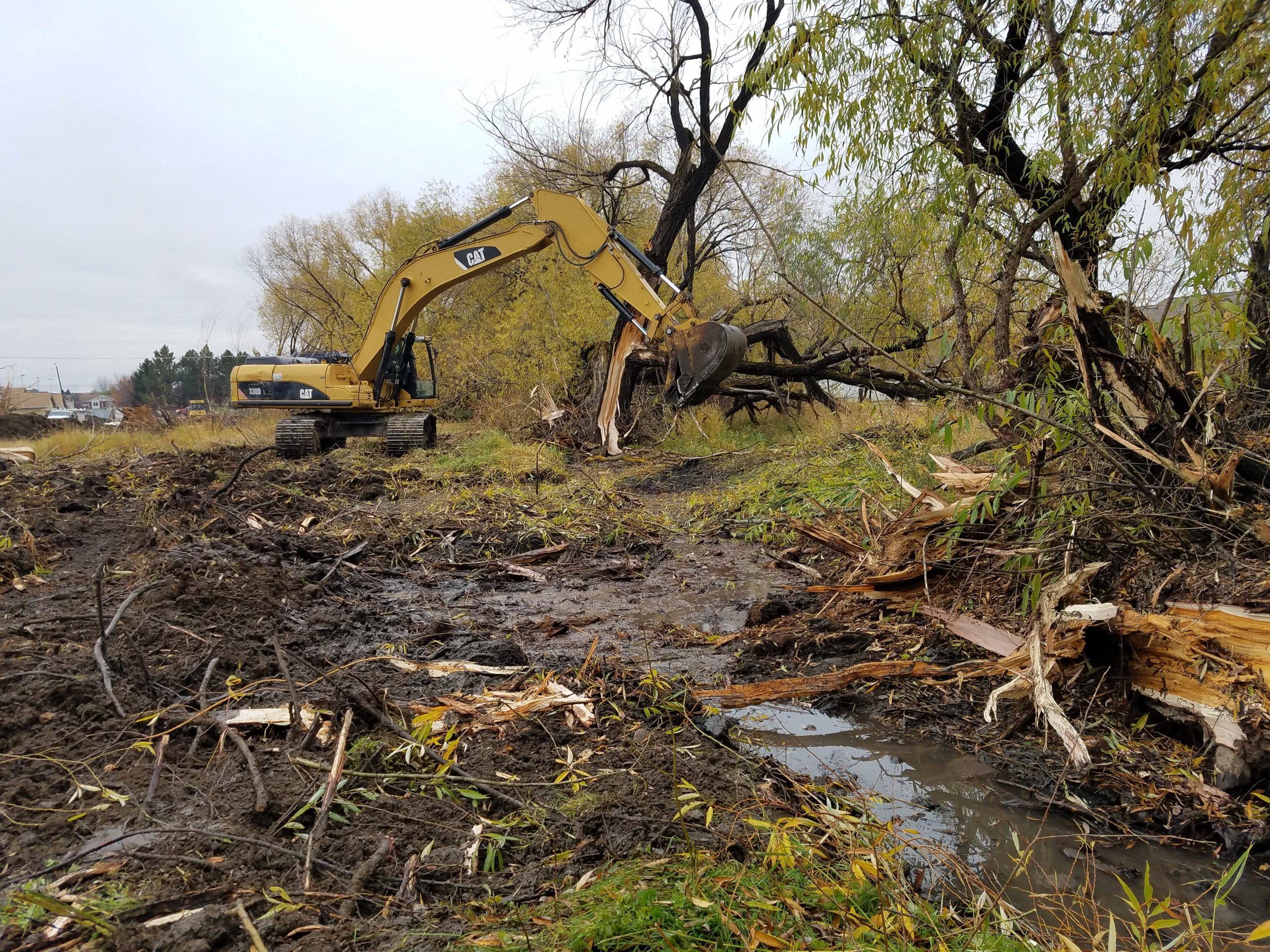
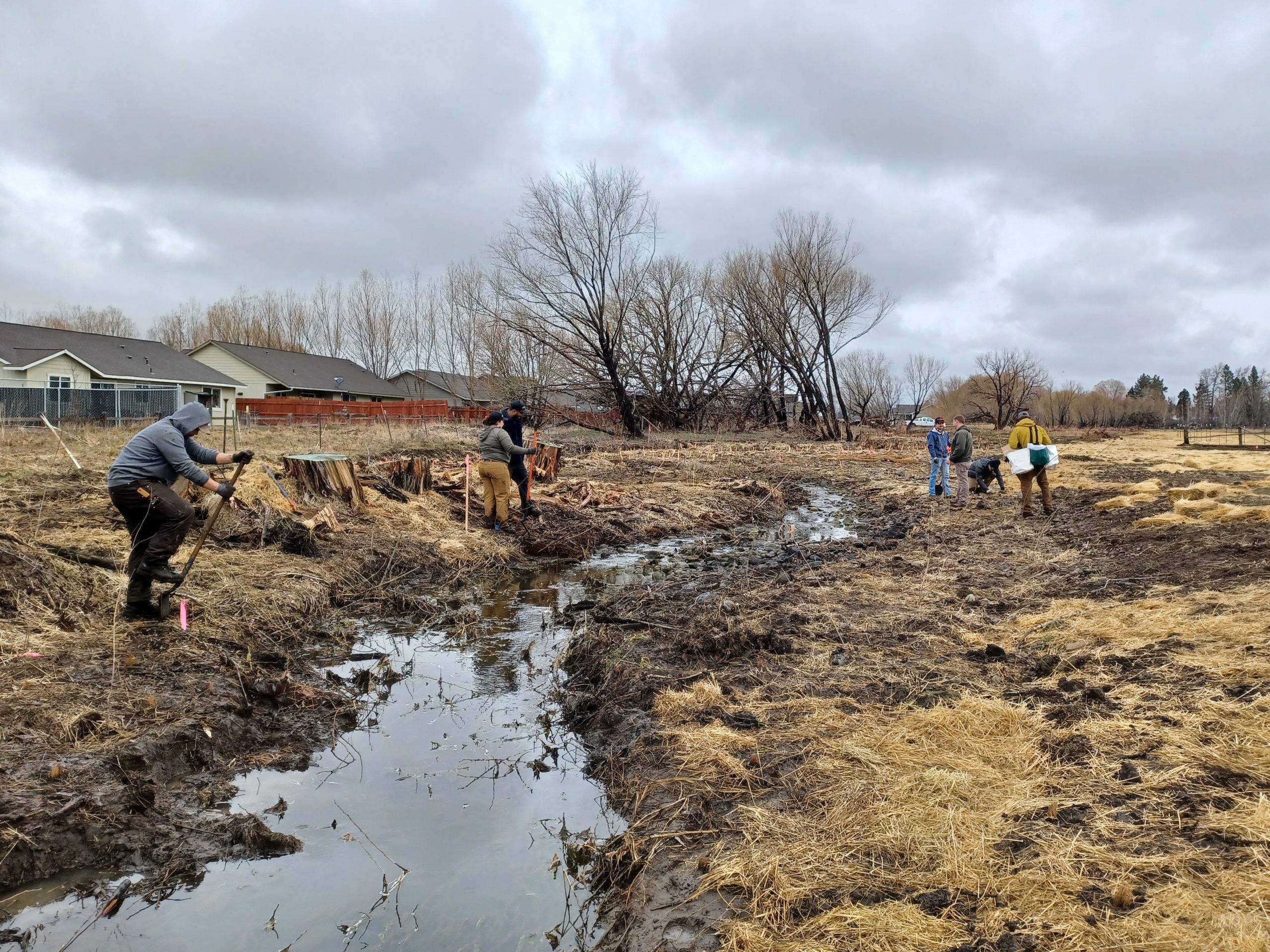
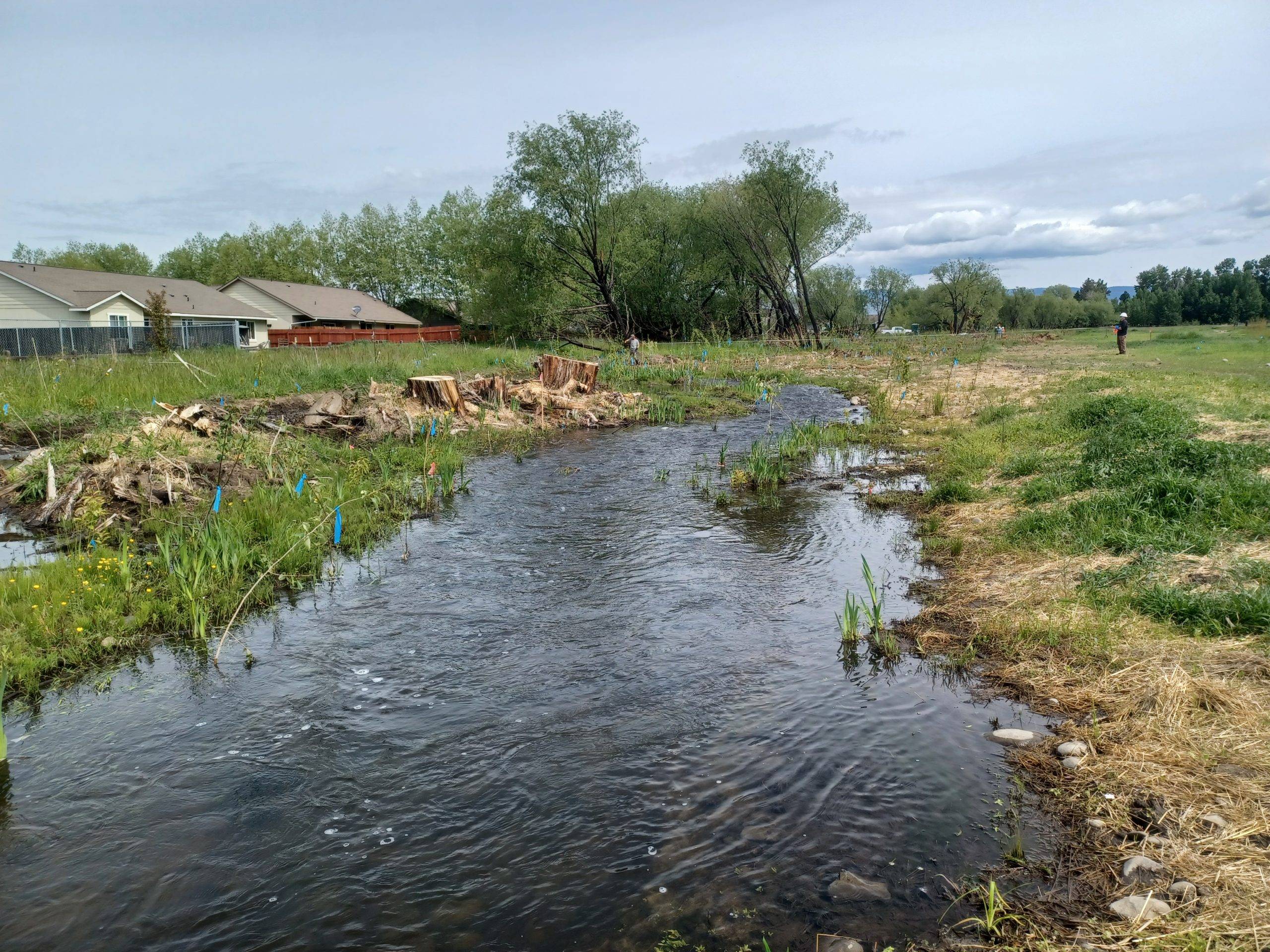
Revegetation
Seasonal high flows are expected to be contained in the new, recontoured floodplain, and native riparian trees and shrubs will be planted. The benefits of inset floodplains include improving groundwater infiltration, improved floodplain function, and improved habitat. Improving native vegetative will increase shading of the creek and thicker vegetation will remove more pollutants and sediment from stormwater.
This project will benefit water quality, flood risk reduction, and fish and wildlife habitat. MCF hopes to provide the community opportunities to get involved in the project with hands-on volunteer activities during planting and stewardship.
